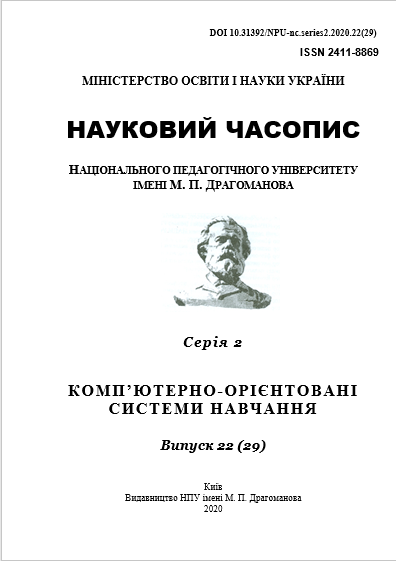RESEARCH ON THE FUNCTIONAL FEATURES OF UNITY 3D MOVEMENT ON THE CASE OF 3D MINI-GAME REALIZATION
DOI:
https://doi.org/10.31392/NPU-nc.series%202.2020.22(29).21Keywords:
Unity 3D, JavaScript, game application, development environment, programming languageAbstract
Currently, the development of computer games is relevant, as with the expansion of the market of personal electronics, the entertainment market is expanding. General availability of tools – game engines, access to various informative educational and reference materials make it possible to develop application software easily, and quickly, such as a computer game.
There are many publications and various scientific studies on the topic of modeling game scenes. This stage of development of gaming computer applications is quite extensive and includes many tasks. It should be noted that in this case, the authors touch on the topic not only of modeling game scenes, but also superficially cover the topic of creating, modeling, texturing game objects, while describing the functionality with which these tasks are performed.
This article considers the most known game engines, their comparative analysis is made. Their advantages and disadvantages are revealed, as well as a range of tasks for which they are easy to use. When comparing different game engines, the authors chose Unity 3D for several reasons: favorable licensing policy; compatibility with any platform; great community; a large amount of documentation; ease of use.
The purpose of this article is to fully describe the process of modeling the scene of a gaming computer application in Unity 3D. To do this, the article considers as an example the implementation of a simple 3D game. In particular, the functionality and tools for modeling a scene in the Unity environment are described, as well as a brief description of the main objects that can be added to the scene. However, a brief overview of the editor and inspector window with all the properties and methods of game objects is given.
The authors try to convey to readers the pros and cons of using this environment to create simple game applications, describe the main menu and tools superficially, without delving into the intricacies of the entire development process.

